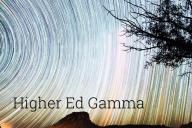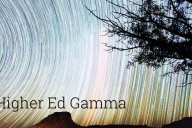You have /5 articles left.
Sign up for a free account or log in.
As my career as a college professor draws to a close, I have decided to offer a series of big-picture classes—courses that are thematically oriented and address important issues across a broad expanse of time. These classes will adopt a holistic, comparative and interdisciplinary perspective, drawing heavily on primary-source texts.
This approach is inspired in part by the summer seminars on the Nature and Origins of New World Slavery that David Brion Davis offered and I assisted with in the late 1990s and early 2000s. Funded by the Gilder Lehrman Institute of American History, these intensive two-week seminars focused more on the history of slavery in classical antiquity, the non-Western world and the Caribbean and Brazil than on antebellum U.S. slavery.
Featuring distinguished guest speakers such as Ira Berlin, Richard H. Brodhead, Seymour Drescher, David Eltis, Stanley L. Engerman and Orlando Patterson, these seminars approached slavery through a wide-angled lens—incorporating anthropological, demographic, ethnographic, literary, medical, psychological and sociological perspectives. They also paid close attention to gender, sexuality and labor.
Participants in these seminars included high school teachers as well as junior faculty members from diverse institutions, among them Annette Gordon-Reed, the Pulitzer Prize–winning Harvard law professor. Michael Lomax, then-president of Dillard University and now head of the United Negro College Fund, also took part.
One of the major outcomes of these seminars was Davis’s Inhuman Bondage, a work that situates American slavery within a global context spanning four continents and several millennia.
Unlike a standard college survey, a big-picture course is not confined to a single field of study. It intentionally crosses the boundaries that often narrow our vision—whether disciplinary, geographical, methodological or temporal.
These big-picture courses offer students the opportunity to engage with profound questions that transcend cultures, academic fields and time periods. They provide a comparative perspective on the forces that have shaped the modern world, to help students see the interconnectedness of different intellectual traditions and the relevance of historical ideas and academic theories to contemporary issues.
Even as an undergraduate, I was frustrated by the lack of high-level overviews and interdisciplinary training that I deeply craved. At Oberlin College in the early 1970s, for example, studying the history of English literature required taking separate courses in at least seven distinct areas—medieval, Renaissance and early modern, Restoration and 18th century, Romantic, Victorian, modernist and postmodern and contemporary literature—since no comprehensive survey was offered.
Yet, even after completing these courses, significant gaps remained. There was little coverage of specific genres such as Gothic literature, detective fiction, science fiction and fantasy. Literary theory, women’s literature and Anglophone literature from regions like Australia, Canada, the Caribbean and India were often overlooked.
The problem, however, extended beyond a single department’s curriculum. Even today, many campuses fail to offer essential interdisciplinary courses. Consider, for instance, the absence of classes on cognitive distortions, logical fallacies and unconscious biases; ethical decision-making in complex contexts; narrative, storytelling and design across disciplines; systems thinking; transdisciplinary research methods; and specialized topics like Anthropocene studies, complexity science, disaster studies, environmental humanities, future studies, human-machine interaction and scientific communication.
What is particularly striking is the general absence of big-picture courses—those that are timely, comparative and transcend traditional boundaries of fields, eras and nations. Imagine the impact of classes that explore the global history of pandemics, the causes and consequences of war from ancient times to the present, human mobility across centuries or the origins and persistence of inequality. These are the kinds of courses that not only provide a sweeping perspective but also equip students with the tools to understand and navigate the complexities of our interconnected world.
The three big-picture classes I will offer are the History of Private Life, Liberalism and Its Enemies, and the Making of Modern Sensibilities. Each course will heavily utilize primary texts and focus on shifts in values, emotions, behavior and outlooks over time.
The first course, the History of Private Life, will explore the everyday experiences and practices of individuals and families in Western Europe and the United States across different historical periods, examining how these aspects of life have evolved. The topics covered include:
- Family life. The structure, membership, functions, roles and dynamics of family life, including parenting, childhood and intergenerational relationships.
- Sexuality. The evolution of sexual norms, behaviors and identities, including marriage, courtship, reproductive rights and the social regulation of sexuality.
- Beauty and fashion. Changes in ideas about beauty and fashion and what these reveal about societal values such as modesty, propriety, self-expression, gender, purity, professionalism, status signaling and individual identity.
- Substance use. Shifting attitudes and behaviors regarding alcohol, tobacco and illicit drugs and what these trends indicate about societal norms, health consciousness, personal autonomy, generational differences and the role of government in regulating private behavior.
- Diet and culinary practices. The history of eating habits, diets and culinary practices, considering how cultural, economic and technological factors have shaped these aspects of life.
- Cleanliness and hygiene. The evolution of standards of cleanliness, sanitation and personal care.
The course is organized around the principle that private life both shapes and is shaped by broader societal transformations. Coherence is provided by several overarching themes:
- Individualism and autonomy. The increasing centrality of personal autonomy and self-expression in private life, reflecting broader societal shifts toward individualism, especially since the early modern period.
- Secularization. The gradual decline of religious authority over private life, with growing secularization influencing attitudes toward sexuality, marriage and daily practices.
- Gender roles and power dynamics. The changing roles of men and women in private life and the evolving power dynamics within households.
- Public versus private sphere. The shifting boundaries between public and private life, particularly how industrialization, urbanization and technological advancements have transformed privacy and the home.
- Consumerism. The rise of consumerism and its impact on private life, from the food we eat to the homes we live in and how material goods and consumption patterns have shaped personal identities and lifestyles.
- Health and hygiene. Changing cultural understandings of health, the body and hygiene and their impact on private life.
These themes will guide students in understanding how private life has both influenced and been influenced by broader historical changes.
The second course, Liberalism and Its Enemies, will explore the development of liberal ideals—liberty, tolerance, democracy, rights and individualism—while examining critiques and alternative ideologies, including anarchism, Burkean conservatism, communitarianism, libertarianism and various forms of socialism. The course will also incorporate more recent critiques from critical race theory, environmentalism and feminism.
Beginning with foundational texts by thinkers like John Locke and Jean-Jacques Rousseau, students will trace how liberalism emerged in response to the absolutism and hierarchical structures of earlier societies. Liberalism’s call for individual freedoms, the rule of law and democratic governance has profoundly influenced modern political institutions and continues to shape contemporary notions of justice and human rights.
However, the course will also critically engage with works that challenge liberalism from various ideological perspectives:
- Anarchist critique. Anarchists like Pierre-Joseph Proudhon and Mikhail Bakunin argue that liberalism’s reliance on state structures perpetuates coercion and inequality. They advocate for a society organized around voluntary cooperation and mutual aid, free from state control.
- Communitarian critique. Thinkers such as Michael Sandel and Alasdair MacIntyre challenge liberalism’s emphasis on individual autonomy, arguing that it neglects community values and social cohesion, which are essential for a flourishing society.
- Conservative critique. Conservatives like Edmund Burke and Roger Scruton warn against liberalism’s tendency to prioritize abstract principles over tradition, authority and social order. They argue that this focus can lead to social fragmentation and moral decay.
- Libertarian critique. Libertarians such as Friedrich Hayek and Robert Nozick share a commitment to individual liberty but criticize liberalism for accepting state intervention in markets and personal lives. They advocate for a minimal state that avoids redistributive policies, viewing them as infringements on personal freedom and property rights.
- Marxist critique. Marxist thinkers, including Karl Marx and Antonio Gramsci, contend that liberalism masks the exploitation inherent in capitalist systems, perpetuating class inequality. They argue that liberal rights and freedoms are illusory for the working class, as power and ownership remain concentrated in the hands of the bourgeoisie.
- Feminist, postcolonial and environmental critiques. These perspectives highlight liberalism’s failure to adequately address gender inequality, colonial exploitation and environmental degradation. They argue that liberalism’s focus on individual rights and market-based solutions often overlooks the systemic and structural factors driving these global challenges.
By engaging with these diverse critiques, students will gain a deeper understanding of the strengths and limitations of liberalism as a political and philosophical tradition. They will critically assess whether liberalism’s foundational principles are sufficient to address contemporary issues of power, equality and social justice or whether alternative frameworks offer more compelling solutions.
Key issues the course will address include:
- Negative and positive rights. Exploring the distinction and tensions between negative rights (freedom from interference) and positive rights (entitlements to certain resources or opportunities).
- Liberalism’s relationship with capitalism, colonialism and paternalism. Examining how liberalism has intersected with these systems and the critiques that arise from these connections.
- Theory versus practice. Investigating the gap between liberalism as an abstract philosophy and its real-world implementation.
- Tolerance and free speech. Exploring the tensions between liberalism’s emphasis on tolerance and free speech and how these ideals play out in practice.
- Liberalism and social justice. Analyzing how liberalism addresses (or fails to address) social justice concerns.
- State power. Examining liberalism’s relationship with state power and the implications for individual freedom and societal order.
- Liberalism versus identity politics. Investigating the tensions between modern liberalism’s emphasis on pluralism and individualism and the rise of identity politics and diversity, equity and inclusion initiatives.
This course will challenge students to think critically about the evolution of liberal thought and its relevance in addressing the complex issues of our time.
The third course, the Making of Modern Sensibilities, will examine the evolution of moral standards, aesthetic tastes, the cultural construction of emotions and shifting conceptions of the good life in the West, from the classical world to the present.
Focusing on the history of emotions as one key aspect, the course will investigate whether certain emotions are universal and innate or whether they (or their expression) vary across time and place. It will demonstrate that many elements of our current emotional lives are the result of long historical processes, showing that emotions are deeply intertwined with social norms, power structures and cultural narratives. These factors shape how we feel, express and understand emotions today. By tracing the historical development of emotional norms, students will gain insight into why certain emotions have been valorized, pathologized or suppressed in different contexts.
The course will also explore the role of emotions in driving historical change, from revolutions to social movements and how emotional expression can both reflect and propel shifts in societal norms. Additionally, it will examine how emotions have been gendered, with distinct expectations for emotional expression imposed on men and women, and how certain emotions, such as anxiety and depression, have been medicalized, psychologized and pathologized, influencing how these emotions are understood and managed.
Certain common themes will run through all of these courses, providing a cohesive framework for understanding the evolution of Western thought and culture.
One major theme is the growth of individualism. The courses will trace how conceptions of the individual and the self have evolved from ancient and medieval thought through the Renaissance and the Enlightenment, culminating in modern notions of personal freedom, autonomy and rights. We will closely examine primary texts that illustrate changing attitudes toward the self, identity and personal responsibility.
Another key theme is secularization, exploring the gradual shift from religious to secular worldviews. The courses will examine how the role of religion in society has changed over time and how this has influenced people’s moral and ethical frameworks. This theme will incorporate theological debates, the rise of scientific rationalism and the secularization of public life.
The problem of evil is a third central theme. We will explore how different cultures and periods have understood and grappled with the existence of evil and human and animal suffering. Through philosophical, religious and literary texts, students will study how interpretations of evil have shifted over time.
Another organizing theme is shifting conceptions of the good life. The courses will explore how ideas about what constitutes a fulfilling, meaningful life have changed, focusing on discussions of virtue, happiness, material success, spiritual fulfillment and how different eras and cultures have prioritized these aspects.
A reliance on primary texts will allow students to engage directly with the thoughts and ideas of the past. These texts will include philosophical treatises, religious scriptures, literary works and historical documents that capture the essence of the periods studied.
By focusing on the evolution of ideas, values, emotions and behaviors, these courses will help students understand the dynamic nature of culture and thought. This approach emphasizes both historical continuity and transformation, encouraging students to see connections between past and present. By blending history, literature, philosophy and theology, I aim to offer students a holistic view of how Western societies have evolved.
These big-picture courses provide students with the opportunity to engage with profound questions that cut across disciplines and time periods. Unlike narrowly focused classes, they will offer a comprehensive understanding of the forces that have shaped the modern world.
The objections to big-picture courses are clear, but they warrant a straightforward response.
- Most faculty members lack the expertise to teach such courses.
Like Columbia’s Great Books core curriculum, these courses should be designed to focus on broad themes and questions rather than requiring deep expertise in every specific area. The goal is to introduce students to big ideas, drawing on the professor’s strengths and supplemented by carefully chosen course readings.
- Most undergraduates lack the background knowledge to benefit from such classes.
Big-picture courses can be structured to introduce students to key concepts and foundational knowledge before delving into more complex discussions. The emphasis is on developing critical thinking skills and connecting ideas across disciplines.
Moreover, these courses can spark curiosity by addressing big questions that naturally intrigue students. Even without extensive background knowledge, the overarching themes can motivate students to engage and learn more.
Additionally, big-picture courses can serve as an entry point or complement to more specialized classes. By exposing students to a wide range of ideas and perspectives, they become better prepared and more motivated to explore specific areas in greater depth later in their studies.
- Such courses are too superficial to be meaningful.
While these courses may cover a broad range of material, they can still achieve depth by focusing on key texts, events or themes that exemplify broader trends. Depth doesn’t always require exhaustive coverage of a narrow topic; it can also mean exploring the profound implications of broader themes.
Effective big-picture courses are not just surveys of facts but are organized around central themes or questions that provide coherence and allow for deeper exploration of ideas. The aim is to understand connections, patterns and shifts over time, which can be deeply meaningful. By emphasizing critical thinking, synthesis and the ability to draw connections across different fields of knowledge, these courses develop essential skills for a well-rounded education.
- Students would benefit more from narrowly focused classes taught by the university’s subject area experts.
Big-picture courses are not intended to replace specialized courses; rather, they complement them by providing context and a broader framework within which students can situate the specialized knowledge they gain from focused classes. In an increasingly interconnected world, understanding the broader context is crucial. Even in areas where a university has deep expertise, students benefit from seeing how their field connects to others, leading to more innovative thinking and problem-solving.
Moreover, big-picture courses foster cognitive flexibility by encouraging students to think across disciplines and time periods. This valuable skill enhances their ability to innovate and adapt, even within specialized fields.
It’s time we break free from disciplinary silos and grapple with topics that truly engage the public mind.
Big-picture classes that tackle timely topics through an interdisciplinary and comparative lens are crucial for providing students with the holistic understanding needed to navigate and address today’s complex global challenges.
To cultivate a generation of thinkers capable of confronting the pressing issues of our time, higher education must adopt big-picture classes that transcend geographic, national and temporal boundaries, fostering interdisciplinary and comparative perspectives.
These classes offer an antidote to the fragmentation of knowledge in modern education, enabling students to connect diverse fields and gain a comprehensive understanding of the topics that impact our world across various contexts.
Integrating multiple disciplines and perspectives, big-picture classes are not just desirable—they are essential. They equip students with the critical skills necessary to understand and address issues that go beyond conventional academic boundaries.
Think big, teach broadly and your students will learn more than you ever imagined.



